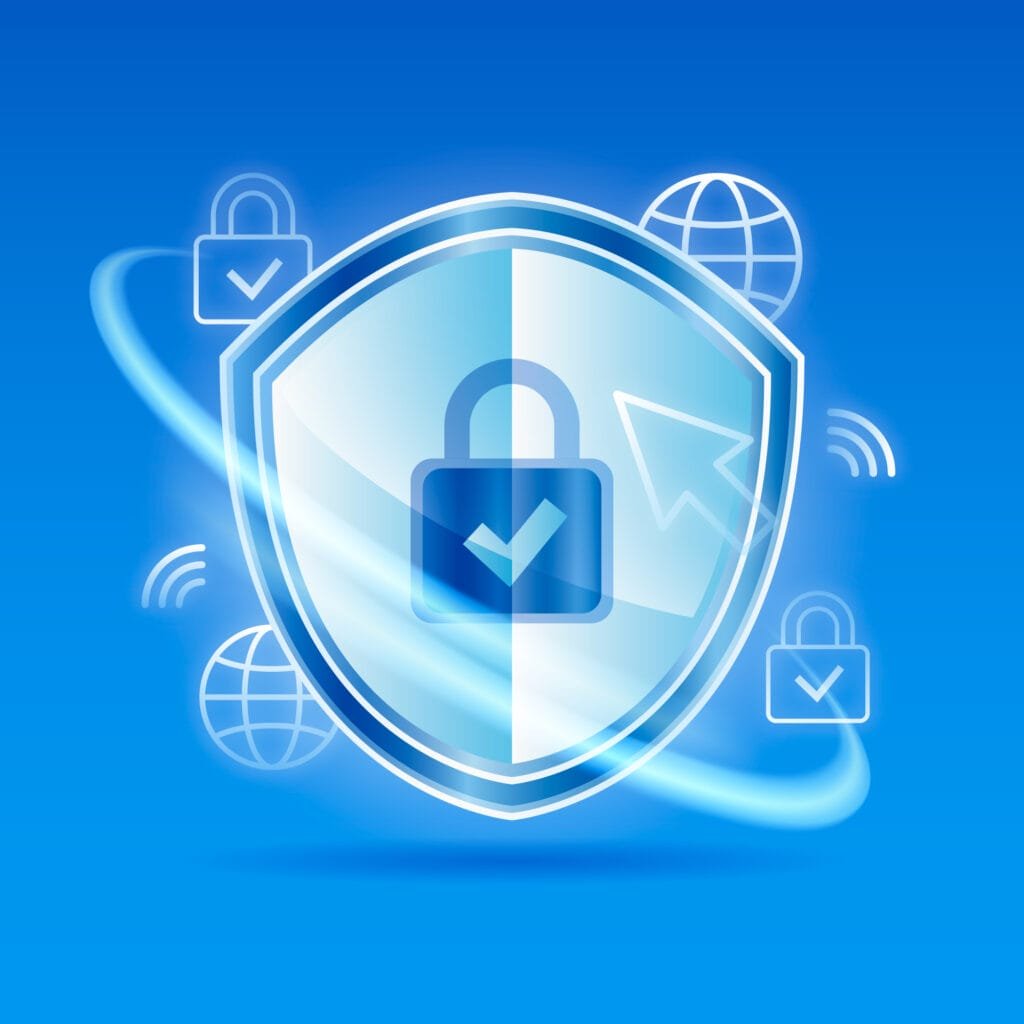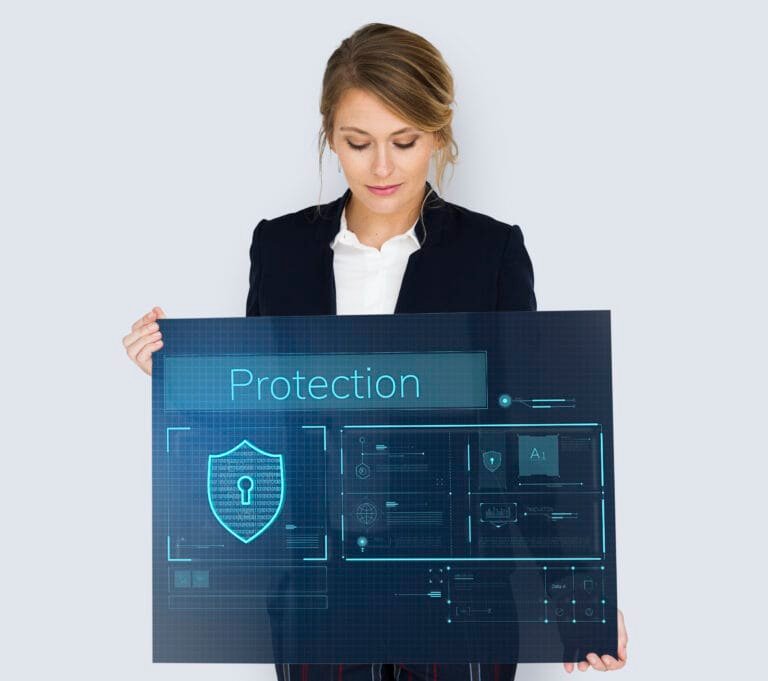Why First Choice for Security Professionals is Crucial in Today’s Threatscape?
Introduction
Strong security measures are vital in a world where connections are becoming more and more connected. Because threats are constantly changing, the first choice for security professionals is to protect data and assets requires a proactive and intentional strategy.
Importance of Security
In digital ecosystems, security is essential to stability. Its function goes beyond simple defense; it also involves maintaining operations, integrity, and confidence.
Current Threatscape
The digital world is a war zone where security risks are always changing and multiplying. It is essential to understand the current danger landscape to improve defenses against future weaknesses.
Evolving Security Risks
Cyberattack Sophistication
Cybercriminals are always improving their strategies and using modern technology to get past security. The intricacy of threats presents previously unknown difficulties, from ransomware attacks to phishing frauds.
Data Breaches and Privacy Concerns
Consistently presenting a threat, data breaches undermine confidence by gaining access to private information. Increased privacy concerns highlight the need for strong security measures.
Rapidly Changing Threat Environment
The threat landscape is dynamic and always evolving; it is not static. Today’s threats may overcome what was safe yesterday. Threat actors are always coming up with new ways to exploit gaps and vulnerabilities.
Proliferation of IoT and Connectivity
The spread of Internet of Things (IoT) devices adds to the increased surface area for attacks. The complexity of security concerns is increased by the fact that every connected device offers a possible point of entry for cyber threats.
Importance of Understanding Threats

Developing strong protective plans requires an understanding of the variety and nature of these threats.
Risk Assessment and Mitigation
Organizations may start focused mitigation efforts and carry out thorough risk assessments by having an in-depth understanding of the hazards facing them.
Predictive Analysis and Threat Intelligence
A predictive approach to security is promoted by proactively identifying potential threats through the analysis of prior incidents and the utilization of threat intelligence.
Regulatory Compliance and Accountability
Respecting the requirements of regulations is crucial. Understanding modern risks facilitates adherence to regulations and ensures responsibility for the protection of confidential information.
Collaboration and Information Sharing
Due to the complexity of today’s threats, information exchange and cooperation between companies are essential within the security industry.
Collective Defense Mechanisms
Working together enables the development of collective defense systems, combining the knowledge and resources to successfully counter common threats.
Rapid Incident Response
Rapid incident response and the identification and containment of security breaches are made possible by shared information.
Adaptive Security Strategies
By developing a culture of continuous learning, information sharing enables businesses to modify their security plans in light of collective knowledge and experience.
First Choice Security

“first choice for security professionals” sticks out as a strategic approach that emphasizes preventive measures and proactive activities over-reactive responses in the complicated current threat landscape.
Characteristics
Proactive Risk Mitigation
‘First Choice Security’ is really about foreseeing and reducing hazards before they materialize. It takes a proactive approach as opposed to a reactive one, seeking to stop security breaches as opposed to just reacting to them once they happen.
Holistic Approach
This security paradigm takes a comprehensive approach to security, taking into account the networks, applications, data, and personnel that make up an organization’s infrastructure. It combines different security tiers to produce a comprehensive defense system.
Continuous Monitoring and Improvement
It involves maintaining an eye on networks, systems, and any threats constantly. It is possible to identify weaknesses and apply iterative enhancements to keep ahead of changing hazards because of this constant awareness.
Risk-Based Decision Making
Decision-Making Based on Risk Using risk-based decision-making techniques is essential when creating “First Choice Security.” It arranges activities in order of possible impact and likelihood of dangers, making sure that resources are distributed efficiently to address the most important risks.
Adaptive and Agile
Agility and adaptability are essential components of this strategy. It recognizes that security threats change quickly, requiring the need for an adaptive strategy that can react quickly to new threats and weaknesses.
Implementation Challenges
Organizational Culture Shift
‘First Choice Security’ implementation frequently requires a major organizational culture change. It demands an organization-wide shift from a reactive to a proactive security posture, requiring support and buy-in at all organizational levels.
Resource Allocation
It could take a lot of money to implement a strong security infrastructure that is in line with the “first choice for security professionals,” including continuous training and awareness campaigns in addition to technology purchases.
Complexity Management
It might be difficult to manage the complexity that comes with having a thorough security system. It is essential to strike a balance between security and usability while maintaining the smooth operation of systems.
Benefits of ‘First Choice Security’
Implementing a ‘First Choice Security’ approach has several benefits beyond just keeping threats at bay. It includes some advantages that are essential for modern companies.
Enhanced Protection

Comprehensive Threat Coverage
Comprehensive protection against a wide range of threats, from malware and phishing attempts to more complex cyber threats, is one of the main benefits. The goal of this strategy is to address vulnerabilities in different infrastructure layers inside an organization.
Safeguarding Critical Assets
Organizations may ensure integrity and confidentiality by putting strong security measures in place to protect their most important assets, such as confidential customer information, intellectual property, and sensitive data.
Mitigating Financial Losses
Preventing security lapses and data breaches lessens the possibility of monetary losses from fines imposed by authorities, legal responsibilities, and post-breach repair expenses.
Operational Resilience
Business Continuity
Proactive security measures help to ensure that corporate operations continue uninterrupted. It ensures continuity even in the face of threats by reducing the disruptions brought on by security incidents.
Enhanced Trust and Reputation
Strong security protocols create confidence among all parties involved, such as clients, associates, and financiers. An atmosphere of security enhances one’s reliability and dependability.
Cost-Efficiency
Cost Savings
Opting for security measures can lead to saving money in the term. It’s financially prudent to prevent security breaches rather than having to handle the consequences of an incident afterward.
Efficient Resource Utilization
Investing in technology, training, and preventative security measures ensures more effective use of resources than does post-security reactive firefighting.
Industry Importance of Security Professionals

Security experts are essential in many different sectors of the economy since they are the first to plan and carry out effective security measures.
Security Professional Role
Information Guardians
Security experts look after sensitive data inside and outside the technology sector. They create and implement plans to shield data against breaches and unwanted access.
Financial Services and Compliance
Security experts protect financial data and transactions from cyber attacks by ensuring that strict regulatory standards are followed in sectors like banking and finance.
Healthcare and Confidentiality
By protecting sensitive medical data and making sure HIPAA standards are followed, they protect patient confidentiality in the healthcare industry.
Role in Critical Infrastructure Protection
Energy and Utilities
Security experts protect vital infrastructure in the energy sector, including utilities and power grids, against online attacks that might compromise vital operations.
Transportation and Logistics
They secure networks and systems that manage essential operations in transportation and logistics, preventing possible disruptions that can affect supply chains.
Technology and Innovation
Tech Companies and Innovation
Technology businesses’ security specialists drive innovation by creating innovative security solutions and making sure that new technologies are resistant to changing threats.
Research and Development
Their participation in research and development ensures that security is given top priority in the early stages of new product and service development, reducing vulnerabilities in later technologies
Training and Education in Security
In the realm of security, skill growth and ongoing education are essential. It’s critical for efficient security protocols to stay current with emerging threats, technology, and best practices.
Continuous Learning
Evolving Threat Landscape
Security experts must always refresh their knowledge to stay up to date with the ever-changing threat landscape. This means knowing fresh attack methods, malware variations, and vulnerability trends.
Industry-Specific Knowledge
Different sectors encounter distinct security obstacles. Security experts are certain to be knowledgeable about industry-specific threats and compliance standards through continuous learning.
Professional Certifications and Training
Certifications and Accreditation
Obtaining certifications widely recognized in the industry, like CISSP, CEH, or CISM, shows proficiency and a dedication to being current with security best practices.
Specialized Training Programs
Completing specialized training courses and seminars facilitates the acquisition of particular skills by security professionals, including risk management, incident response, and penetration testing.
Technologies Shaping Security Solutions
Modern technologies are at the forefront of improving security protocols and providing creative answers for combating changing threats.
Artificial Intelligence (AI) in Security
Threat Detection and Analysis
Real-time threat identification is made possible by AI-powered algorithms that provide quick and precise identification of anomalies in network traffic and behavior.
Predictive Analytics
AI uses machine learning to analyze patterns and anomalies to anticipate possible security breaches, enabling proactive mitigation before problems happen.
Blockchain for Data Integrity
Immutable Data Records
Blockchain technology protects data records from tampering and unwanted changes by ensuring their immutability and integrity.
Secure Transactions
Blockchain reduces the dangers of fraud and data tampering by ensuring safe and transparent transactions in sectors like finance.
Advanced Encryption Techniques
Data Protection
Advanced encryption techniques, like quantum-resistant encryption, protect private data by making it unreadable for unauthorized parties.
End-to-End Encryption
Ensuring privacy and secrecy through the use of end-to-end encryption across communication channels is crucial, particularly in sensitive conversations.
Cloud Security Solutions
Secure Cloud Environments
Robust cloud security policies reduce risks related to cloud-based services and storage by protecting data kept in cloud environments.
Identity and Access Management
Cloud solutions with effective access control techniques provide authorized access and keep unwanted people out of important data repositories.
Adaptability in Security Strategies
Adaptability, flexibility, and agility in security methods are critical for successful protection mechanisms in the ever-changing threat scenario.
Rapid Response to Emerging Threats
- Adaptive Measures: Security plans must quickly change to counter new threats. To fight new attack vectors, defense mechanisms must constantly evolve.
- Agile Incident Response: Rapid detection, containment, and resolution of security problems are made possible by an agile incident response system, which also reduces potential harm.
Flexibility in Security Frameworks
- Scalable Solutions: Scalable security frameworks that maintain security requirements are necessary to adapt to changing organizational needs.
- Customization and Tailoring: Customized security strategies that are adapted to unique organizational needs and changing threats are made possible by flexibility.
Proactive Risk Assessment and Mitigation
- Predictive Analysis: Preemptive actions to reduce hazards before they materialize are made possible by the use of predictive analytics, which helps to forecast prospective threats.
- Continuous Testing and Improvement: Security measures must be continuously tested and improved upon to ensure their continued effectiveness against new threats and weaknesses.
Addressing Complexity in Security Challenges

Because of the complexity of today’s threat landscape, comprehensive and flexible security methods are necessary to meet the inherent difficulties.
Diverse and Sophisticated Threats
- Rapidly Evolving Tactics: Cyber threats are always changing, using advanced methods to get beyond established security controls.
- Blending Attack Vectors: Defenses become more difficult to implement because threat actors frequently mix different attack channels, such as social engineering and technical exploitation.
Complexity of Network Infrastructures
Hybrid Environments
Managing security in hybrid settings that include cloud, on-premises, and third-party services increases the difficulty of protecting operations and data.
Interconnectedness and Interdependencies
System interconnectivity and reliance on several interconnected networks make systems more vulnerable to security breaches that escalate over time.
Compliance and Regulatory Pressures
- Stringent Compliance Requirements: Adapting to changing threats while meeting strict compliance rules is a major problem for corporations.
- Global Regulatory Variations: Completing the task of adhering to industry standards and different data protection legislation becomes more challenging while navigating numerous worldwide regulatory frameworks.
Resource Allocation and Capacity
Budget Constraints
Budget constraints frequently prevent resources from being allocated to the implementation of strong security measures and the acquisition of cutting-edge technology.
Skill Shortages
The difficulty of putting into practice and sustaining efficient security measures is made worse by the lack of qualified cybersecurity specialists.
Importance of Choice in Security Measures
The selection of security measures has an impact on defense mechanisms’ resilience and efficacy throughout organizational environments.
Strategic Decision-Making
Tailoring Security Approaches
Selecting the best security method involves assessing threats, industry-specific requirements, and organizational demands to customize strategies.
Prioritizing Proactive Measures
Choosing proactive security over-reactive security is a strategic decision that goes beyond just responding to problems.
Impact on Risk Mitigation
- Mitigating Known and Emerging Risks: The organization’s capacity to successfully mitigate known vulnerabilities as well as emerging threats is determined by the security measures used.
- Adapting to Changing Threats: More resilience against changing threat landscapes is ensured by security decisions that permit flexibility and adaptation.
Organizational Resilience
- Strengthening Incident Response: Selecting strong incident response procedures improves the capacity of the company to identify, handle, and recover from security issues.
- Cultural Integration of Security: Adopting a culture that emphasizes security creates a resilient atmosphere in which each individual knows their part in keeping the ecosystem secure.
Return on Security Investments
- Long-term Benefits: Although investing in strong security measures could cost money up front, doing so will pay off in the long run by reducing the risk of financial loss and reputational harm.
- Value of Comprehensive Solutions: A stronger defense posture is ensured by selecting comprehensive security solutions that address different threat vectors.
Conclusion
A key strategy in handling the complex threat landscape of today is “First Choice Security.” To effectively counter shifting threats, it combines technological innovation, adaptability, and proactive actions.
FAQ
1: Why is proactive security essential in today’s digital landscape?
Answer: Proactive security measures are crucial because they anticipate and prevent potential threats before they occur. In an ever-evolving threat landscape, being reactive isn’t enough. Proactive strategies mitigate risks before they impact systems, data, or operations, ensuring a stronger defense against sophisticated threats.
2: How do security professionals contribute to mitigating threats?
Answer: Security professionals play a critical role in identifying, analyzing, and mitigating threats. They orchestrate security strategies, conduct risk assessments, implement robust defense mechanisms, and continuously monitor for potential vulnerabilities. Their expertise helps organizations stay ahead of evolving threats.
3: What are the key technologies enhancing security measures?
Answer: Cutting-edge technologies like AI-driven threat detection, blockchain for data integrity, advanced encryption methods, cloud security solutions, and IoT security mechanisms are instrumental. These technologies bolster defense mechanisms, offering innovative ways to detect, protect, and respond to emerging threats.
4: How can organizations adapt to rapidly evolving threats?
Answer: Organizations must prioritize adaptability by fostering a culture that embraces change. They should invest in continuous learning, leverage flexible security frameworks, integrate new technologies, and empower employees through training and awareness initiatives. Swift adaptation and proactive response are key.
5: What impact does the choice of security measures have on overall resilience?
Answer: The choice of security measures significantly impacts an organization’s resilience. Opting for proactive, comprehensive, and adaptive security measures enhances resilience against threats. It enables organizations to respond effectively to incidents, maintain business continuity, and safeguard critical assets.







